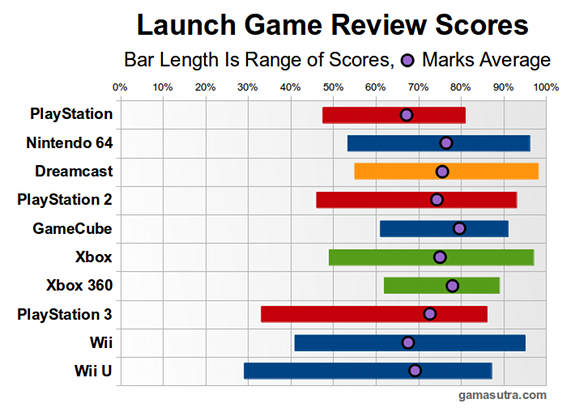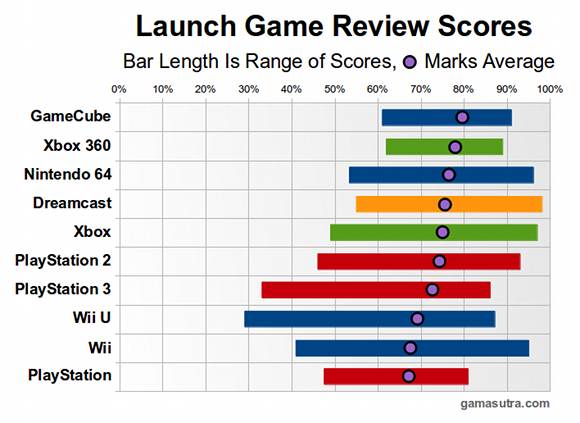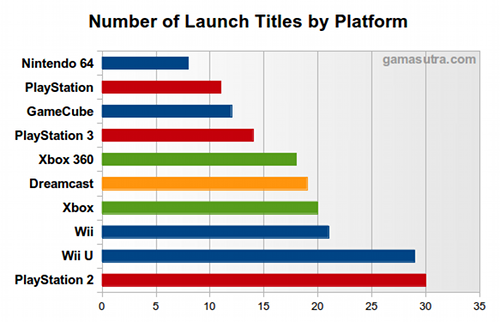Console launches are typically characterized by a handful of titles that often end up defining the system they come out on, fairly or not. The Wii U launched with a fairly large catalog of games, and the range of scores was large as well.

“This particular view shows that the last three systems released in the U.S. market, the PlayStation 3, Wii, and Wii U, all had an extraordinarily wide spread of launch review scores. The PlayStation 3 and Wii U are also noteable for having their launch game review averages skewed toward the upper end of the range of all their review scores,” said Matt Matthews. “On the other hand, the Xbox 360 and the GameCube both had an exceptionally narrow range of review scores for their launch titles. Also, we can see that the Dreamcast had the fortune of having the best-reviewed launch game ever, SoulCalibur. The second-best was Halo: Combat Evolved on the original Xbox.”

“An interesting split appears between the Wii U and Wii and Nintendo’s earlier systems. The GameCube has the best-reviewed launch slate of any system while the Nintendo 64 comes in third behind the Xbox 360. Yet the Wii is near the bottom, near the PlayStation for which little data is available. And the Wii U is currently just above the Wii, albeit with a lower maximum and a much lower minimum,” Matthews added about review averages. “There is perhaps a discussion to be had there about what that means. Does it represent a cultural shift away from Nintendo and its brand Have reviewers simply become more discerning Or, perhaps we can point to an increasing number of licensed titles and sequels as dragging generally on the novelty of a system’s launch. I’m at least willing to ascribe some of the Wii’s lower scores to both developers not quite knowing how to utilize motion controls and reviewers not knowing how to score motion control games.”

Worth noting that the Wii U has the most titles at launch, save the PS2, and that’s not counting those online in Nintendo’s eShop. While the GCN and Nintendo 64 had highly-respected launch titles, they also managed to have some of the fewest number of games.
“So it does appear that Nintendo and its third-party partners have spent some effort to offer more software at launch. It will be interesting to see how Microsoft and Sony manage the software for their launches, which I currently expect sometime in late 2014,” noted Matthews. “In fact, the Wii U could be the last major system whose main method of distribution is through retail. When new Sony and Microsoft consoles arrive, the average early adopter will likely also be a heavy network services user. When that happens, the distinction between retail and digitally-distributed software will largely disappear.”
Source: Gamasutra.com

